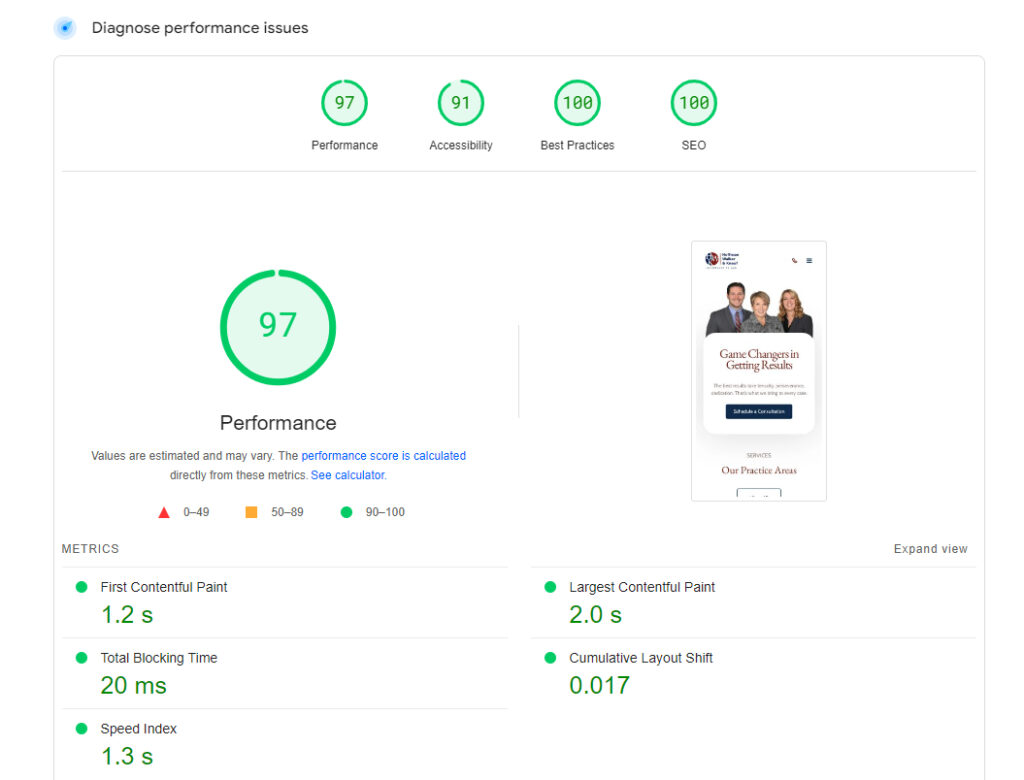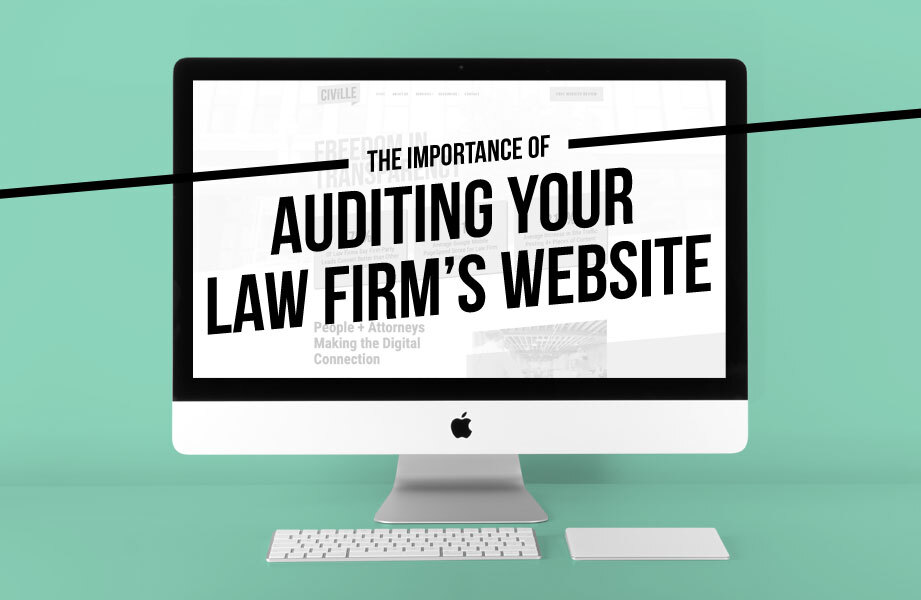
In today’s digital age, having a strong online presence is essential for any law firm. A critical part of that online presence is search engine optimization (SEO). With so many factors to consider, how do you know where to start? You can start with a website audit. Civille has some tips on how to audit a law firm website for SEO in 2024.
Why SEO Matters for Law Firms
Search engine optimization (SEO) is the process of optimizing your website to rank higher in search engine results pages (SERPs). When potential clients search for legal services online, you want your firm to be one of the first they see within your practice areas. Higher rankings lead to more website traffic, more leads, and ultimately, more clients.
The Benefits of Conducting an SEO Audit
An SEO audit is a comprehensive analysis of your website’s strengths and weaknesses from an SEO perspective. It can help you identify areas for improvement and develop a plan to boost your search engine ranking.
The 8 Steps of an SEO Audit for Law Firms
- Page Speed Analysis: Perform a page speed analysis to ensure that your website is loaded fast, especially on mobile. Mobile page speed is a very important ranking factor.
- Keyword Research: Identify the keywords and phrases that potential clients are using to search for legal services in your area. This step is important as it feeds into many of the other steps in the process.
- Competitor Analysis: See how your competitors are ranking for your target keywords and identify areas where you can improve. This can feed back into your keyword research. When done properly, keyword research and competitor analysis is not only very time-consuming but should be an ongoing process.
- On-Page SEO Audit: Analyze your website’s content, title tags, meta descriptions, and header tags to ensure they are optimized for your target keywords. Also, ensure that they meet best practices in terms of both length and content.
- Technical SEO Audit: Check for technical issues that could be preventing your website from being indexed and crawled by search engines.
- Local SEO Audit: Optimize your website for local search, including claiming and updating your Google My Business listing. This is especially important for firms that rely on local customers.
- Accessibility: You want anyone to be able to use your website. This means having things like links with discernable names, a decent contrast ratio between backgrounds and text, and alt text on images. All of this will help the visually impaired access and use your website.
- Backlink Analysis: Evaluate the quality and quantity of backlinks to your website. Consider what directories you should be listed in and where your competitors are linked.
Additional Tips:
- Keep your content fresh and up-to-date.
- Publish blog posts and articles on a regular basis.
- Use social media to promote your website and content.
- Get involved in online communities and forums.
- Build relationships with other lawyers and businesses in your community.
By following these tips, you can improve your law firm’s website SEO and attract more clients.
Read More: Attract More Clients: 10 SEO Strategies for Law Firms
What is Google PageSpeed Insights?
Google PageSpeed Insights is a free tool that analyzes the performance of your website on both desktop and mobile devices. It provides you with a score and specific recommendations for improvement.
How to Use Google PageSpeed Insights
- Go to the Google PageSpeed Insights website: https://pagespeed.web.dev/
- Enter the URL of the website you want to test in the search bar.
- Click on the “Analyze” button.
- The tool will generate a report that includes your website’s score, as well as specific recommendations for improvement.

Understanding the Report
The report is divided into four sections: performance, accessibility, best practices, and SEO. The report also has two versions one for mobile and and one for desktop. For the most part, you can ignore the desktop version of the report as it covers a little less and puts the bar a little lower, especially for performance.
- Performance—This boils down to page speed and it will measure things such as first constant pain and largest content paint as well as cumulative layout shift.
- Accessibility—Here you will find some of the elements we spoke about above including contrast ratio in background and foreground colors and the presence of alt text on images.
- Best Practices—This section will ensure that your website doesn’t have third-party cookies, uses HTTPS, and provides images properly.
- SEO—Lastly, SEO will look at the crawlability of your site, ensure that things like meta, and title are set, and that your robots.txt is valid.
It is worth noting that though Google PageSpeed Insights tool looks at a lot more than just page speed, it only analyzes the URL you feed into it and is not an audit of your full website. If you only feed your homepage into it willnot find eros on your blogs. This tool is good as a spot check, especially on your homepage, but as your site grows, it will be difficult to keep usign this tool for anything but a homepage audit. Still useful, but not an end-all be-all solution.
Why Mobile Matters
More and more people are using their smartphones and tablets to search for legal services. That’s why it’s crucial to make sure your website is mobile-friendly and has a fast loading speed. Google prioritizes mobile-friendly websites in search results, so a slow mobile website could be hurting your ranking.
How to Fix Page Speed Issues
Although Google’s PageSpeed Insights tool can identify a lot of issues, it’s the page speed issues that are often the most debilitating and the hardest to fix. Once you’ve identified the issues that are affecting your website’s speed, you can start to fix them. The specific steps you’ll need to take will vary depending on the issue and will typically fall on your website provider. However, some of the most common fixes include:
- Minify and combine your CSS and JavaScript files
- Optimize your images
- Use a content delivery network (CDN)
- Enable browser caching
Read More: Why is Page Speed Important for Law Firm Websites?
Other Website Audit Tools
While Google PageSpeed Insights is a great free tool, there are other paid tools that can provide more in-depth website audits, such as SEMrush and Ahrefs. These tools can provide you with more data on your backlinks, competitors, and organic traffic.
A limited version of SEMrush starts at $108.33 per month when you pay annually ($1,300 a year). For Ahrefs a lite starter plan will start at $99 per month. These plans are not overly expensive, but in truth, your website provider should be utilizing at least one of these and can provide insight without you spending the extra cash.

At Civille, we understand the importance of SEO for law firms. That’s why we offer free website audits to help you identify areas for improvement. Our audits cover everything that we have talked about in this blog and more.
How Much Does Law Firm SEO Cost?
Ready to Get Started with Civille?
If you’re ready to improve your law firm’s website SEO, contact Civille today for a free website audit. We’ll help you identify areas for improvement and develop a plan to boost your search engine ranking.





